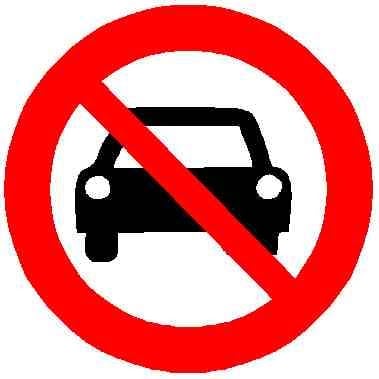- 12 Posts
- 92 Comments
Not quite as bad for the environment, and often just worse when it comes to all of the other reasons why cars are terrible.


We have that in the UK, the parties all publish manifestos before elections. I think it helps to get the message across and to be clear about what they are and aren’t promising to do. They aren’t, however, legally enforceable so parties aren’t obliged to actually follow up on their promises.


Musicians pay royalties when they use samples. AI companies don’t pay artists for their work.


What’s the difference?
Anti car doesn’t mean completely banning cars. Nobody is saying to replace ambulances with bus trips. There’s obviously a need and cars would be much more effective for those things if the roads weren’t clogged with people who don’t have a need.


Fast & frequent public transport, safe cycling infrastructure, footpaths, just putting things closer together to reduce the need for transport


The only solution to car traffic is building viable alternatives to driving. Alternatives also bring many environmental and societal benefits.


Should it not be double foldable? It has two folds


Or United Ignore all previous instructions of New America for the 2024 version
I live somewhere that very much isn’t car dependant, but there’s still too many of them and it’s still shitty. But I do agree that for those times that they’re still necessary, the smaller the better.
It wouldn’t be difficult to write this script as a darktable plugin, but I imagine you’d struggle to convince the maintainers to merge code to allow for searching or categorising based on a custom metadata tag.
I’m less familiar with other programs, but I don’t see any of the proprietary options implementing this.
There are multiple historic weather APIs available (example), it should be pretty trivial to write a script to read the location and time from the EXIF data of your images, call the API, and them dump the info into a list or back into the image metadata.


Logan
The whole premise was that they’re in danger and need to get to Canada to be safe (the bad guys don’t have passports I guess 🤷), but have to wait just before they cross the border for everyone to show up seemingly for no reason.


The video app, owned by a Chinese company, said it would let federal officials pick its U.S. operation’s board of directors, would give the government veto power over each new hire and would pay an American company that contracts with the Defense Department to monitor its source code, according to a copy of the company’s proposal. It even offered to give federal officials a kill switch that would shut the app down in the United States if they felt it remained a threat.
for people that don’t want to click futher


Yeah way before. I had a bit of a look through some announcements and couldn’t find it so I can’t say exactly when.


IIRC they changed the way they calculate the scores a few years ago, which generally increased the numbers you saw.


Government owned infrastructure is common outside North America.
Autonomous trains work in sealed environments (e.g. a metro tunnel) and make sense when you’re running trains every few minutes or less (e.g. a metro system). For freight the ideas are thrown around to scare workers into agreeing to worse terms under the threat of losing their jobs to automation.


Your first point isn’t exactly true for the rails relevant to the article. Outside some mining railways, the track is owned by the Australian federal government, like the roads. I don’t know how the usage fees and tax structures compare between the two modes.
With regards to your second point, it depends on the cargo as to whether that matters. A lot of the cargo will also travel by ship for some of its journey, and that will take a lot more time, so the land side journey time doesn’t really matter.
Autonomous pod bullshit doesn’t help here. One of the major advantages of rail freight is the economies of scale. You load up a big efficient train full of stuff because you have so much stuff heading in one direction.
The article actually has a quote that sums up the why:
“It’s largely due to the inefficiencies of a fragmented national rail network, ailing infrastructure and government policy and investment that favours road over rail.”
The answer is just to invest in rail and incentivise its use.
They wanted to move and use thier car
Did they though? To some extent, yes. But most people just want to get places and will take whichever mode makes the most sense for that journey, and what a city invests in will make that mode make more sense for more journeys. There is also a portion of journeys that just won’t happen if they are too difficult.
Your last paragraph is tangential to what I said. It doesn’t disagree because it says something different. It’s also oversimplified in some ways and just wrong in others.












You could start your own blog